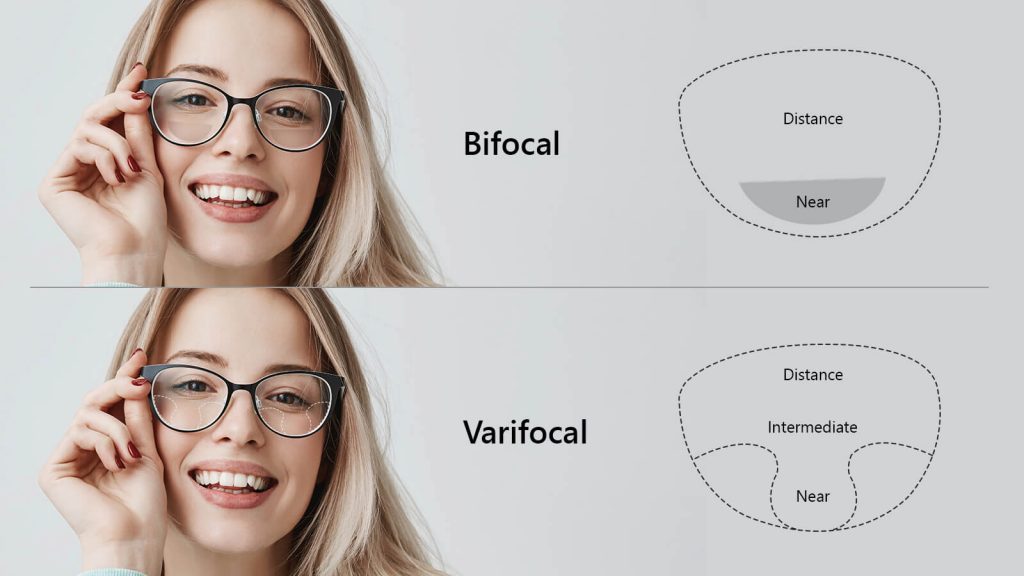
What is the difference between bifocal and varifocal lenses?
Bifocals and varifocal lenses are the part and parcel of prescription eyeglasses used to correct vision defects originated due to hypermetropia, myopia, presbyopia, and astigmatism. Although both of them can cure refractive disorders and consists of more than one power strength in a single lens. When it comes to comparing their structure, performance, and benefits, there appears a significant difference bifocal and varifocal lenses carry.
Bifocal Lenses
Bifocal lenses consist of two different power strengths in a single lens. The upper and lower part of the lens is separated through a visible distinct line. The top part is used to correct nearsightedness, which means that the object at distant appear blurry and the eyes are unable to focus at distance objects. The upper part consisting of power strength in negative Diopters which can make distant objects appear clear. Likewise, the lower part of the lens acts as the reading glass that is designed to correct vision disorder caused by presbyopia and farsightedness, i.e. the inability of eyes to focus at objects kept close by. The lower portion of bifocal glasses consists of power strength in positive Diopters. The user needs to only shift the focus of eyes from top to bottom to view distance objects as well as close by objects from the same lenses.
Varifocal Lenses
On the other hand, varifocal lenses are an updated version of bifocal lenses and are advanced technology lenses. Varifocal glasses, also known as Progressive Glasses, can help in focusing clearly not one or two but at three distance limits. Off course, it can correct vision defects and help to see clearly at distant and close by objects, but the varifocal lens is divided into three sections. The uppermost part of the varifocal lens is designed to correct nearsightedness, just like bifocal lenses. The lowermost part of the lens is designed to correct the refractive disorder caused by farsightedness and presbyopia that enables the user to read, perform needle-work, use smartphone etc. The middle section of the varifocal lens is designed to provide enhanced intermediate vision, that allows the user to focus and clearly view objects kept at little further from arm’s length such as laptop computer, etc.
Difference bifocal and varifocal lenses
Apart from the major differences as mentioned above pertaining to the appearance and performance, bifocal and varifocal glasses are different in the following manner as well:
- Varifocal lenses allow a gradual transition from reading mode to distance view and vice versa which is lacking in bifocal lenses.
- Visible transition line that divides both the prescription sections are present in bifocals but absent in varifocals.
- A broader view is derived from varifocal lenses than bifocals.
- Varifocals are comparatively costlier than bifocals, but considering the comfort and value for money derived by varifocals is worth it.
- Customisation is possible with varifocals according to the profession, work, lifestyle, visual requirements, sports etc.
- Reglaze GlassesThe benefits derived from varifocal lenses are far more convenient than the bifocals, therefore, considering varifocals as your new lenses is a better option. Besides, it has become easy to replace the lenses effectively without changing your existing or old frames through reglaze glasses at Specscart. Reglazing is a process whereby old lenses from the existing frame are removed and new lenses with varifocals or user’s choice are inserted. It is a cost-saving effort to extend the life of the old frame and to derive the extended benefit of customised lenses. So, if you are still struggling with your old school bifocals, log on to Specscart and get reglaze glasses in uk delivered at your doorstep within 24 hours.
Read about latest eyewear trends


